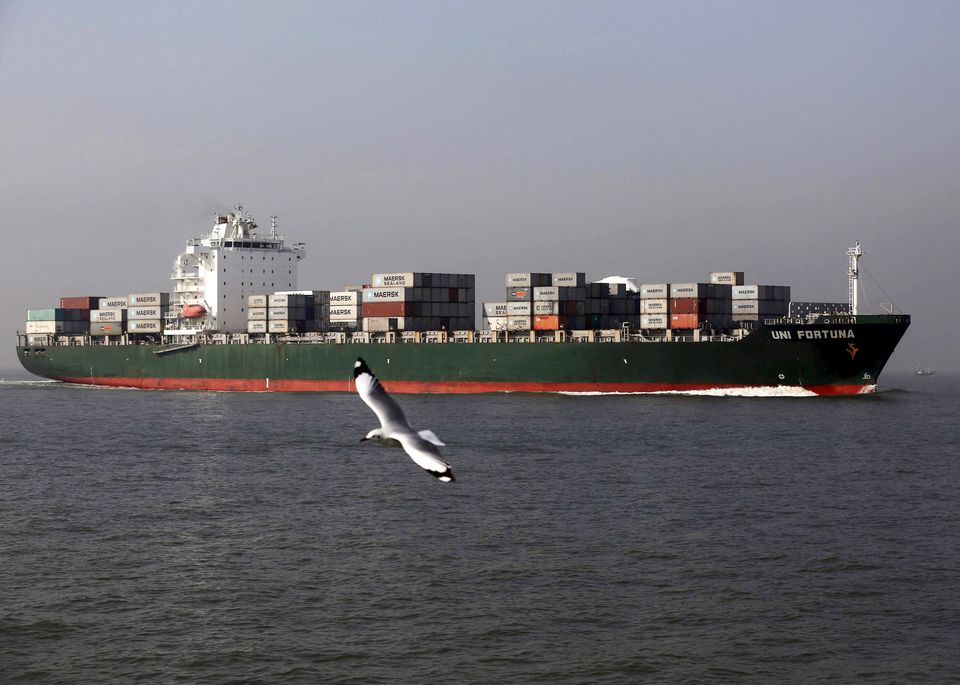Shipping ministry wants Rs 11,000 crore over nine years to float container PLI scheme
Officials said the higher Budget outlay, as suggested by the Indian Institute of Foreign Trade (Kolkata), could help India wean away at least a 10 per cent share of demand from global container liners on grounds that most of them are looking at ‘China plus One’ policy for importing goods.
)
The shipping ministry has significantly jacked up its fund demand for a production-linked incentive (PLI) scheme that it plans to float for encouraging shipping container manufacturing in India to compete with China as a source country for global supplies.
The ministry’s ask, said its officials, has been raised to Rs 11,000 crore with spending spread over nine years. Of these nine years, incentive outlays for the first five years will be fixed and for the last four years will be in a decreasing order.
The ministry’s fund demand is nearly 13 times higher than the Budget outlay of Rs 800 crore that the Expenditure Finance Committee had indicated last November based on the limited utility of the scheme for catering to the small domestic market.
Besides rewarding annual increments in manufacturing, officials said the scheme is aimed at bridging the price gap between domestically-manufactured and imported containers. Compared to the Indian ones, which cost about Rs 1.46 lakh per box, the Chinese containers cost a paltry Rs 75,000 apiece.
Officials said the higher Budget outlay, as suggested by the Indian Institute of Foreign Trade (Kolkata), which was hired for the feasibility study, could help India wean away at least a 10 per cent share of demand from global container liners on grounds that most of them are looking at ‘China plus One’ policy for importing goods.
The policy has gained prominence due to global supply chain disruptions during COVID-19 and the recent trade tensions whereby businesses and governments are increasingly aware of the vulnerabilities that arise from relying on a single nation for manufacturing or sourcing essential goods.
Officials said that by including containers as the 15th sector in the PLI scheme, the ministry hopes to build it as a new indigenous industry. At present, a handful of small domestic producers fail to meet the demand for rail and shipping operators so much so that the country’s largest operator — public sector company Container Corporation of India — has its entire fleet from China.
In fact, not just India, almost 90 per cent of global needs of container liners is met by Chinese companies. The global shipping container market size is close to $7 billion and is expected to be more than $12 billion by 2028.
According to officials, the scheme would be open only for containers of size 20 and 40 feet, including standard and high cube containers. It encompasses dry storage, flat rack, open-top and open-side storage containers as well as refrigerated ISO containers.
However, the beneficiary company would only be those that are registered in India as partnership firms, limited liability partnerships, proprietorship firms and limited companies under the Companies Act 2013, or joint ventures engaged in end-to-end manufacturing of shipping containers.
In the first year, the PLI scheme would give incentives to match the existing price differential. Therefore, the proposal is to provide support for the cost differential component of container manufacturing, regardless of the level of production, based on two factors: the differential price and the incremental production.
Subsequently, the scheme would reward incremental production. If incremental production targets are not met in the following year, the company will only be eligible for incentives based on the differential price component and will not receive the incremental production component.
Twelve months before the end of the ninth year, a review shall be carried out by a committee — formed for implementing the scheme — to decide whether the scheme is to be continued in the same form and modalities.
The ready availability of containers in time is the key to the sustenance and growth of India's export industries. In the logistics supply chain, the availability and the turnaround time of shipping containers affect freight charges for products requiring containers for transportation.
Therefore, to keep the logistic supply chain efficient and economical, the availability of shipping containers at an affordable rate is essential for the export-oriented Indian market.
With price competitiveness, it would help boost the capacity of indigenous container manufacturing facilities in India. Self-reliance, in turn, will ensure the steady supply of shipping containers, even in case of global scarcity or difficult geopolitical scenarios, such as the pandemic, a regional conflict, and a trade embargo.
Keeping in view India's vision of becoming 'Atmanirbhar' or self-reliant, PLI schemes for 14 key sectors have been announced with an outlay of Rs 1.97 lakh crore to enhance India's manufacturing capabilities and exports.
Get Latest Business News, Stock Market Updates and Videos; Check your tax outgo through Income Tax Calculator and save money through our Personal Finance coverage. Check Business Breaking News Live on Zee Business Twitter and Facebook. Subscribe on YouTube.
10:48 AM IST











 Shipping Ministry invites feedback on revised draft Indian Ports Bill
Shipping Ministry invites feedback on revised draft Indian Ports Bill Contingency plan, SOP in place to safegurad interest of Indian crew on ships: Govt
Contingency plan, SOP in place to safegurad interest of Indian crew on ships: Govt Govt approves over Rs 500 crore for development of Sagar Port project in West Bengal
Govt approves over Rs 500 crore for development of Sagar Port project in West Bengal 9 initiatives taken to improve 'ease of doing business' at Indian ports
9 initiatives taken to improve 'ease of doing business' at Indian ports